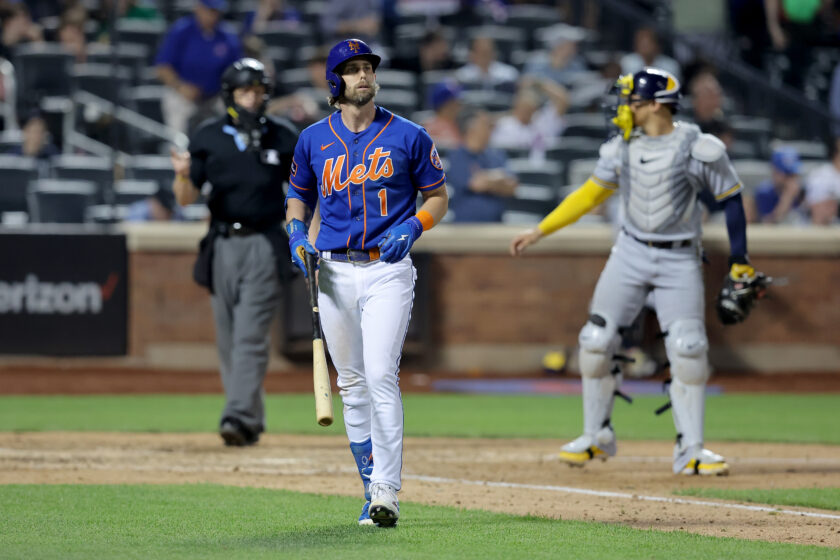It’s official: Mets’ Jeff McNeil probably hates MLB’s limit on shifts

Major League Baseball looks a lot different in 2023 than it ever has before. Bigger bases, PitchCom, pitch clocks, and a limit on defensive shifts have brought faster games and more action to the diamond. But while we’re just over the halfway mark this season, you’d have to imagine many players are still adjusting. Maybe we should add Mets infielder Jeff McNeil to that list.
The 2022 season was a huge rebound campaign for McNeil. After struggling to a .679 OPS in 2021, that number jumped up to .836. He also finished with an MLB-best .326 batting average. This performance earned him a four-year, $50 million contract extension to stay in New York.
Like most players on the Mets’ roster right now, this year hasn’t been particularly fun for McNeil. He’s currently slashing .253/.331/.328 through 362 plate appearances. If the season ended today, his .659 OPS and 91 wRC+ would both be career-low marks.
There are a handful of things one could point to as reasoning behind this performance thus far. McNeil’s hard-hit rate (24.7% to 20.9%) and soft-hit rate (14.3% to 17.7%) have both gone in the wrong direction. The same can be said about his infield-fly rate (6.6% to 15.8%). But could a limit on shifting be a reason why he’s having trouble right now?
MLB.com’s Mike Petriello wrote an article this week discussing who has benefited the most (and least) from the league’s new rules regarding shifts. There hasn’t been a huge advantage or disadvantage for the majority of hitters. However, McNeil has been hurt the most, losing seven hits so far this season.
I know what you’re thinking — seven hits isn’t that many. It changes things a little, but when you’ve already accumulated 300-plus plate appearances, the difference is minimal. And you’re right. But these changes have likely shifted a big part of McNeil’s game, who would step into the box, see what the defense was giving him, and use that to his advantage.
Petriello noted that McNeil had a .416 batting average on balls in play when facing the shift in 2022. That was the highest in baseball among qualified hitters, and about 100 points better compared to him not facing a shift.
Another huge part of McNeil’s 2022 performance resided in his success rate when hitting ground balls. Last year, he slashed .338/.338/.400 on ground balls, yielding a .738 OPS and 114 wRC+. So far this season, those numbers are down at .248/.248/.256, .504, and 41, respectively.
That’s a big difference, especially when it’s your most common batted-ball event with a hard-hit rate well below the 32.3% league average.
While losing an estimated seven hits doesn’t seem like a huge deal, the bigger issue is likely how McNeil’s approach has changed. However, everyone in baseball is dealing with the same thing. Miami Marlins hit machine Luis Arraez has found a way to adjust and is hitting .383.
McNeil just needs to figure it out. But for a Mets team that desperately needs to get going before this season is lost, he needs to do it sooner rather than later.
You can reach Matt Musico at matt.musico@xlmedia.com. You can follow him on Twitter: @mmusico8.
Matt Musico is an editor for ESNY. He’s been writing about baseball and the Mets for the past decade. His work has been featured on numberFire, MetsMerized Online, Bleacher Report, and Yahoo! Sports.






